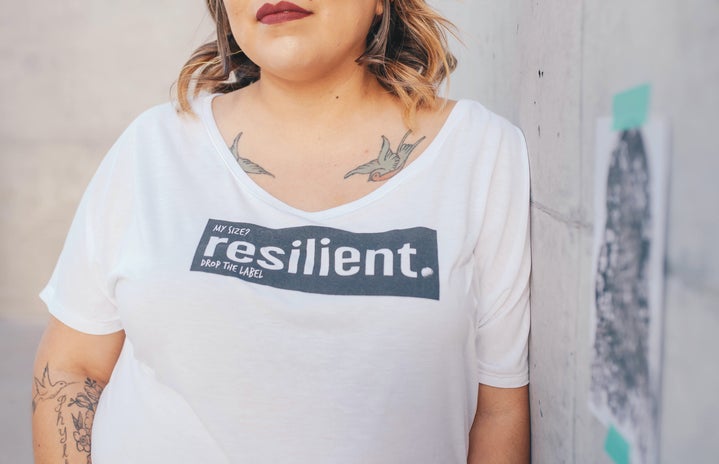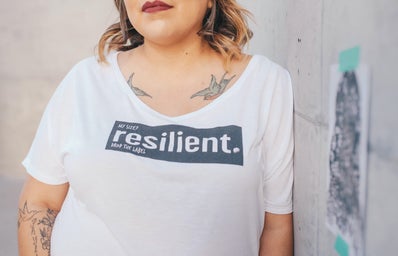Over the past several years as a teenage bookworm, I know that I’ve read at least two or three dozen dystopian young adult novels. When I try to remember them, though, it seems that I’ve read just one. Or that I’ve read two or three dozen novels about the same girl.
To many readers, simply the fact that these novels have protagonists that aren’t men is progressive and laudable. Certainly, a genre featuring so much girl power is a great step in the right direction for female representation. These women, though, seem to be coming out of a strangely specific mold to which every young adult dystopian author has access.
This classic young adult female protagonist is the underdog. She’s an outsider; maybe shy in school or with just a few close friends. Underneath her meek exterior, though, she’s secretly strong-willed, courageous, and brilliant. Something has happened in her past that she needs to come to terms with somehow as she finds her way through her plot. She almost invariably has brown hair, 16 years old, a little on the short side, considerably thin, and she admits her lack of fashion sense. She also usually manages to catch a barely-quirky-yet-desirable male love interest by the end of her story arc.
Who came to mind when reading that description? Was it Katniss Everdeen? Lena Haloway? America Singer? Any and every stereotypical young adult fiction female protagonist could fit that description with few variations. It seems that the heroines of the novels we love are becoming just as homogeneous as their books’ covers. (How many times are we going to see a beautiful girl wearing a gorgeous ball gown in a monochromatic color scheme before we lose interest?)
Why have female protagonists become a trope? The readers of young adult fiction like The Mortal Instruments series, The Obernewtyn Chronicles, and the Divergent trilogies often identify with those novels’ protagonists. We feel like we’re not totally understood; we have our extraordinary hidden talents, though, that shine through the lack of appreciation, maybe talents of which we aren’t even aware. The heroines of these stories, although pitted against tyrants, the supernatural, and even death itself, seem to reflect something of their audience.
It makes sense, then, that authors use this formula to appeal to readers. The problem with female protagonists as products of a formula, though, is that only one type of girl is the girl who saves the day. She’s straight. She’s white. She’s able-bodied. She has an idealized description early on, usually while catching a glimpse of her reflection in a mirror, that lets the reader know just how much understated beauty she possesses.
In realistic young adult fiction, authors like Rainbow Rowell and David Levithan have broken this mold. Female protagonists seem to be able to look different, act differently, and inhabit a wider range of roles when they aren’t occupying a dystopian backdrop.
The homogeneity becomes starker when dystopian young adult novels are adapted into films. Even Tris Prior of the Divergent series was made to be brunette, a disappointment to those like me who’d though we’d found a blonde representative in the genre. Hair color, though, is the least of the issues of representation in film adaptations. Katniss Everdeen, described as “olive-skinned,” lost an opportunity to be portrayed by an actress of color when Jennifer Lawrence was chosen as the lead. Often, body types and ethnicities of these characters are either unspecified or unimportant to the novel’s plot, so why are they always portrayed as idealized white women?
Shailene Woodley as Tris Prior
The fact that Cassia Reyes of the Matched trilogy is thin, white, and able-bodied has nothing to do with her story arc. Cassia’s role in the novel could have easily been filled by a character who doesn’t resemble a Barbie doll. Even in novels like The Maze Runner, where Teresa’s physical athleticism is important to the novel, her blue-eyed, pale-skinned appearance isn’t.
Kaya Scodelario as Teresa
A perfect example of representation in non-dystopian adaptations is The Cursed Child, the recent stage production in the world of Harry Potter. Hermione, who so many readers and viewers had only seen as Emma Watson, was portrayed by Noma Dumezweni, a black woman. J.K. Rowling herself pointed out on Twitter that the casting is perfectly canon; Hermione in the books is described as having “brown eyes” and “frizzy hair.”
Dumezweni as Hermione Granger
In a genre that so many readers, especially young girls, look to for role models and kindred spirits, why are our heroines’ appearances so restricted? I, for one, would love to read a novel where a queer woman rescues her city from tyranny. Or where a disabled black woman overpowers the monsters laying siege to her school. Or where a curvy woman finds a love interest that sees her as more than the mysterious girl to whom he was so inexplicably drawn.
Just as there is a world of variation among readers of dystopian young adult fiction, there is a world of possibilities for that genre’s female protagonists. If, as so many have said, we read to relate, let’s create a canon of diversity to which we can actually relate.

